| Listing 1 - 10 of 12 | << page >> |
Sort by
|
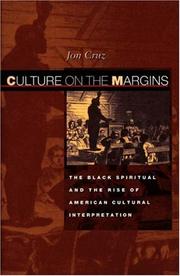
ISBN: 1282753797 1400823218 9786612753794 1400811325 9781400811328 9781400823215 9780691004730 0691004730 9780691004747 0691004749 1400801435 9781400801435 9781282753792 Year: 1999 Publisher: Princeton, N.J. : Princeton University Press,
Abstract | Keywords | Export | Availability | Bookmark
 Loading...
Loading...Choose an application
- Reference Manager
- EndNote
- RefWorks (Direct export to RefWorks)
In Culture on the Margins, Jon Cruz recounts the "discovery" of black music by white elites in the nineteenth century, boldly revealing how the episode shaped modern approaches to studying racial and ethnic cultures. Slave owners had long heard black song making as meaningless "noise." Abolitionists began to attribute social and political meaning to the music, inspired, as many were, by Frederick Douglass's invitation to hear slaves' songs as testimonies to their inner, subjective worlds. This interpretive shift--which Cruz calls "ethnosympathy"--marks the beginning of a mainstream American interest in the country's cultural margins. In tracing the emergence of a new interpretive framework for black music, Cruz shows how the concept of "cultural authenticity" is constantly redefined by critics for a variety of purposes--from easing anxieties arising from contested social relations to furthering debates about modern ethics and egalitarianism. In focusing on the spiritual aspect of black music, abolitionists, for example, pivoted toward an idealized religious singing subject at the expense of absorbing the more socially and politically elaborate issues presented in the slave narratives and other black writings. By the end of the century, Cruz maintains, modern social science also annexed much of this cultural turn. The result was a fully modern tension-ridden interest in culture on the racial margins of American society that has long had the effect of divorcing black culture from politics.
Culture --- African Americans --- Spirituals (Songs) --- Cultural sociology --- Sociology of culture --- Civilization --- Popular culture --- Afro-Americans --- Black Americans --- Colored people (United States) --- Negroes --- Africans --- Ethnology --- Blacks --- African American spirituals --- Afro-American spirituals --- Negro spirituals --- Folk songs, English --- Hymns, English --- Research --- History. --- Music --- Social aspects. --- Social aspects --- Black people
Book
ISBN: 0271080140 9780271080147 9780271050843 0271050845 9780271075761 0271075767 0271080124 1322308861 0271064595 0271065737 Year: 2016 Publisher: University Park, Pennsylvania : Pennsylvania State University Press,
Abstract | Keywords | Export | Availability | Bookmark
 Loading...
Loading...Choose an application
- Reference Manager
- EndNote
- RefWorks (Direct export to RefWorks)
Volume 1 of Nothing but Love in God's Water traced the music of protest spirituals from the Civil War to the American labor movement of the 1930s and 1940s, and on through the Montgomery bus boycott. This second volume continues the journey, chronicling the role this music played in energizing and sustaining those most heavily involved in the civil rights movement.Robert Darden, former gospel music editor for Billboard magazine and the founder of the Black Gospel Music Restoration Project at Baylor University, brings this vivid, vital story to life. He explains why black sacred music helped foster community within the civil rights movement and attract new adherents; shows how Martin Luther King Jr. and other leaders used music to underscore and support their message; and reveals how the songs themselves traveled and changed as the fight for freedom for African Americans continued. Darden makes an unassailable case for the importance of black sacred music not only to the civil rights era but also to present-day struggles in and beyond the United States.Taking us from the Deep South to Chicago and on to the nation's capital, Darden's grittily detailed, lively telling is peppered throughout with the words of those who were there, famous and forgotten alike: activists such as Rep. John Lewis, the Reverend Ralph Abernathy, and Willie Bolden, as well as musical virtuosos such as Harry Belafonte, Duke Ellington, and The Mighty Wonders. Expertly assembled from published and unpublished writing, oral histories, and rare recordings, this is the history of the soundtrack that fueled the long march toward freedom and equality for the black community in the United States and that continues to inspire and uplift people all over the world.
Gospel music --- African Americans --- Spirituals (Songs) --- History and criticism. --- Civil rights --- History. --- Music
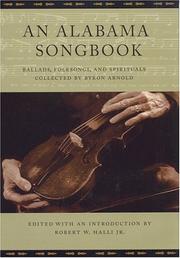
ISBN: 9780817387341 081738734X 0817357653 9780817357658 0817313060 9780817313067 9780817357658 Year: 2013 Publisher: Tuscaloosa : University of Alabama Press,
Abstract | Keywords | Export | Availability | Bookmark
 Loading...
Loading...Choose an application
- Reference Manager
- EndNote
- RefWorks (Direct export to RefWorks)
A lavish presentation of 208 folksongs collected throughout Alabama in the 1940s.Alabama is a state rich in folksong tradition, from old English ballads sung along the Tennessee River to children's game songs played in Mobile, from the rhythmic work songs of the railroad gandy dancers of Gadsden to the spirituals of the Black Belt. The musical heritage of blacks and whites, rich and poor, hill folk and cotton farmers, these songs endure as a living part of the state's varied past.In the mid 1940s Byron Arnold, an eager young music professor from The University of Alab
Book
ISBN: 1643361910 1643361902 9781643361918 9781643361895 9781643361901 Year: 2021 Publisher: Columbia : University of South Carolina Press,
Abstract | Keywords | Export | Availability | Bookmark
 Loading...
Loading...Choose an application
- Reference Manager
- EndNote
- RefWorks (Direct export to RefWorks)
"Eric Sean Crawford, associate professor of music and director of the Joyner Institute for Gullah and African Diaspora Studies at Coastal Carolina University, examines the history and diffusion of Gullah spirituals, an important and at times overlooked aspect of Gullah culture in the Lowcountry and Sea Islands of South Carolina and Georgia. Crawford's work focuses primarily on the South Carolina sea island of St. Helena in Beaufort County. While much has been done to study, preserve, and interpret Gullah culture, Crawford writes, "the shouting and rowing songs, containing the strongest West African retentions, are mostly lost and forgotten. This book illuminates the remarkable history, survival, and influence of this island's music since the earliest recordings in the 1860s." While Crawford's focus may be the St. Helena spirituals, his study is not limited only to that one place. Instead he examines the diffusion and impact of the music and culture that emanated from this one small island community. He follows the Gullah spirituals through to the musical arrangements of the famed Hampton Singers and later shows how the songs served as a rallying point and cultural bridge, helping to build support for America's involvement in World War I and as a way of easing racial tensions both at home and abroad. He shows how patriotic texts and themes were added to the spirituals and helped to make them popular wartime songs. Hampton University folklorist Natalie Curtis, for example, used the melody from the St. Helena spiritual "Ride On, Jesus" in her wartime anthem "Hymn of Freedom," which was sung not only in churches of the time, but also to gatherings of American soldiers mobilizing for war. Part of the goal of the US Army in choosing the song was to build African American support for the war, and also ease racial tensions within the (still segregated) ranks. Later, civil rights activists in the 1950s and 60s would find their own spiritual and political uses for the songs, as many were rediscovered and disseminated throughout the country as protest songs. The songs were not reimagined as protest songs, but rather had always been, and Crawford traces this long trajectory "from their beginnings in West Africa and later oppression by white missionaries to their height as songs for social change and black identity in the twentieth century." Crawford--an ethnomusicologist by training--relies not only upon archival records, but also conducted his own fieldwork, personal recordings, and oral interviews to develop his understanding of St. Helena and its music. His work, however, diverges from these earlier studies in its attempt to tell the stories not only of the music, but also of the music makers. This includes song leaders Minnie Gracie Gadson and Deacon James Garfield Smalls, who Crawford discusses in Chapter 7 and who both shared their own knowledge and memory of the St. Helena spirituals with Crawford during his time conducting field recordings on the island. Finally, Crawford includes an appendix with more than fifty transcriptions of St. Helena spirituals, many no longer performed and more than half derived from his own transcriptions completed during his fieldwork. The "Gullah Songbook," as he calls it, includes notations on Gullah terminology and phrasing that is provided by educator/author/television personality Ron Daise, who was the receipient for the 2019 South Carolina Governor's Award for his work preserving and disseminating Gullah culture"--
Spirituals (Songs) --- Gullahs --- Political aspects --- History and criticism. --- Music --- United States. --- South Carolina
Book
ISBN: 1469602830 0807869503 9780807869505 9781469602837 080786949X 9780807869499 9780807869499 9798890843159 Year: 2011 Publisher: Chapel Hill : University of North Carolina at Chapel Hill Library : distributed by University of North Carolina Press,
Abstract | Keywords | Export | Availability | Bookmark
 Loading...
Loading...Choose an application
- Reference Manager
- EndNote
- RefWorks (Direct export to RefWorks)
First published in 1867, Slave Songs of the United States represents the work of its three editors, all of whom collected and annotated these songs while working in the Sea Islands of South Carolina during the Civil War, and also of other collectors who transcribed songs sung by former slaves in other parts of the country. The transcriptions are preceded by an introduction written by William Francis Allen, the chief editor of the collection, who provides his own explanation of the origin of the songs and the circumstances under which they were sung. One critic has noted that, like the editors' introductions to slave narratives, Allen's introduction seeks to lend to slave expressions the honor of white authority and approval. Gathered during and after the Civil War, the songs, most of which are religious, reflect the time of slavery, and their collectors worried that they were beginning to disappear. Allen declares the editors' purpose to be to preserve, "while it is still possible... these relics of a state of society which has passed away."
African Americans --- Folk music --- Folk songs, English --- Spirituals (Songs) --- Enslaved persons --- Slaves
Book
ISBN: 1496852109 Year: 2015 Publisher: Jackson, [Mississippi] : University Press of Mississippi,
Abstract | Keywords | Export | Availability | Bookmark
 Loading...
Loading...Choose an application
- Reference Manager
- EndNote
- RefWorks (Direct export to RefWorks)
The untold story behind the creation of the classic songbook Slave Songs of the United States.
Ethnomusicologists --- Spirituals (Songs) --- History and criticisim. --- Garrison, Lucy McKim, --- Slave songs of the United States.
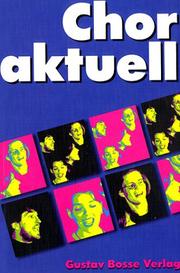
ISBN: 3764922486 Year: 1983 Publisher: Kassel Bosse
Abstract | Keywords | Export | Availability | Bookmark
 Loading...
Loading...Choose an application
- Reference Manager
- EndNote
- RefWorks (Direct export to RefWorks)
spreekgezangen --- spirituals --- religieuze muziek --- wereldmuziek --- volksliederen --- koormuziek --- 634 --- 635 --- Vocale didactiek - Secundair onderwijs --- Vocale didactiek - Kinder- en jeugdkoor
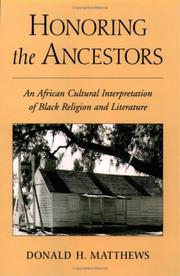
ISBN: 1280441712 019535804X 1601299931 0585308977 9780585308975 9781601299932 9780195091045 0195091043 9781280441714 9786610441716 6610441715 0195091043 Year: 1998 Publisher: New York : Oxford University Press,
Abstract | Keywords | Export | Availability | Bookmark
 Loading...
Loading...Choose an application
- Reference Manager
- EndNote
- RefWorks (Direct export to RefWorks)
Using ""The Negro Spiritual"" as a source material, this volume analyzes the methods employed by social scientists, historians and literary critics in studying African-American religion, and makes its own theological statement regarding African-American religion.
Black theology. --- African Americans --- Spirituals (Songs) --- African American theology --- Blacks --- Theology, Doctrinal --- Religion. --- History and criticism. --- Religion --- Black people
Book
ISBN: 0252050304 9780252050305 9780252041631 9780252083273 0252041631 9780252041631 025208327X 9780252083273 Year: 2018 Publisher: Urbana, Illinois : University of Illinois Press,
Abstract | Keywords | Export | Availability | Bookmark
 Loading...
Loading...Choose an application
- Reference Manager
- EndNote
- RefWorks (Direct export to RefWorks)
Spirituals performed by jubilee troupes became a sensation in post-Civil War America. First brought to the stage by choral ensembles like the Fisk Jubilee Singers, spirituals anchored a wide range of late 19th-century entertainments, including minstrelsy, variety, and plays by both black and white companies. In this work on postbellum spirituals in theatrical entertainments, Sandra Jean Graham mines a trove of resources to chart the spiritual's journey from the private lives of slaves to the concert stage. Graham navigates the conflicting agendas of those who, in adapting spirituals for their own ends, sold conceptions of racial identity to their patrons.
African Americans --- Jubilee singers. --- Minstrel shows --- Spirituals (Songs) --- Musicians --- Afro-Americans --- Black Americans --- Colored people (United States) --- Negroes --- Africans --- Ethnology --- Blacks --- African American spirituals --- Afro-American spirituals --- Negro spirituals --- Folk songs, English --- Hymns, English --- African American minstrel shows --- Blackfaced minstrel shows --- Negro minstrel shows --- African Americans in the performing arts --- Revues --- Vaudeville --- Blackface entertainers --- Music --- History anc criticism. --- History --- History and criticism. --- Blackface --- Racism against Black people --- Anti-Black racism --- Antiblack racism --- Racism against Blacks --- Black people --- Impersonation --- American minstrelsy --- Minstrelsy --- Minstrelsy, American --- Blackface. --- Racism against Black people.
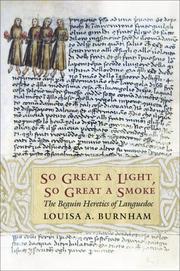
ISBN: 0801458412 9780801458415 9780801441318 0801441315 9780801457173 0801457173 Year: 2010 Publisher: Ithaca, NY
Abstract | Keywords | Export | Availability | Bookmark
 Loading...
Loading...Choose an application
- Reference Manager
- EndNote
- RefWorks (Direct export to RefWorks)
In So Great a Light, So Great a Smoke, Louisa A. Burnham takes us inside the world of a little-known heretical group in the south of France in the early fourteenth century. The Beguins were a small sect of priests and lay people allied to (and sharing many of the convictions of) the Spiritual Franciscans. They stressed poverty in their pursuit of a Franciscan evangelical ideal and believed themselves to be living in the Last Days. By the late thirteenth century, the leaders of the order and the popes themselves had begun to discipline the Spirituals, and by 1317 they had been deemed a heresy. The Beguins refused to accept this situation and began to evade and confront the inquisitorial machine. Burnham follows the lives of nine Beguins as they conceal themselves in cities, construct an "underground railroad," solicit clandestine donations in order to bribe inquisitors, escape from prison, and venerate the burned bones of their martyred fellows as the relics of saints. Their actions brought the Beguins the apocalypse they had long imagined, as the Church's inquisitors pursued them along with the Spirituals and began to arrest them and burn them at the stake. Reconstructing this dramatic history using inquisitorial depositions, notarial records, and the previously unknown Beguin martyrology, Burnham vividly recreates the world in which the Beguins lived and died for their beliefs.
Third orders --- Franciscan Spirituals --- Monasticism and religious orders --- Tertiaries --- Spirituals, Franciscan --- Friars --- Olivi, Pierre Jean, --- Languedoc (France) --- Church history. --- Olieu, Pierre Jean, --- Oliva, Petrus Johannis, --- Olivi, --- Olivi, P. J. --- Olivi, Peter, --- Peter John Olivi, --- Peter of John Olivi, --- Olivi, Petrus Johannis, --- Peter Olivi, --- Olivi, Pietro di Giovanni, --- Olivi, Pierre de Jean,
| Listing 1 - 10 of 12 | << page >> |
Sort by
|

 Search
Search Feedback
Feedback About UniCat
About UniCat  Help
Help News
News